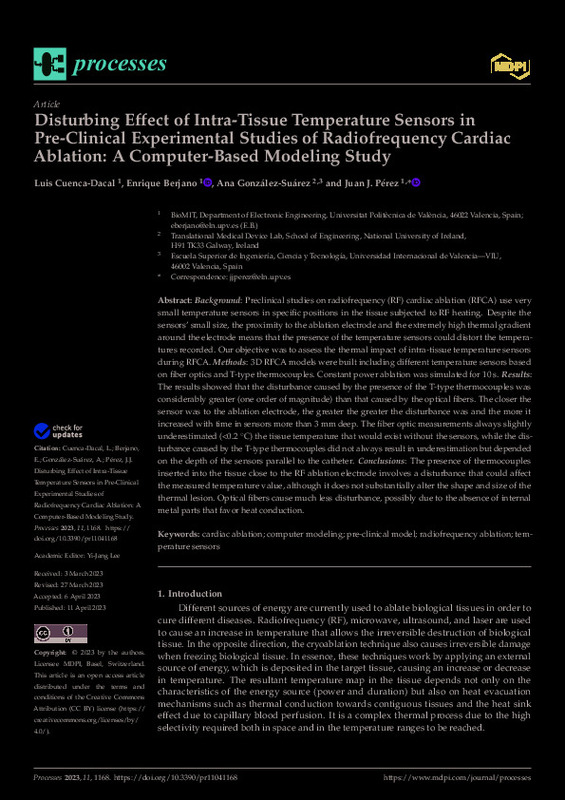JavaScript is disabled for your browser. Some features of this site may not work without it.
Buscar en RiuNet
Listar
Mi cuenta
Estadísticas
Ayuda RiuNet
Admin. UPV
Disturbing Effect of Intra-Tissue Temperature Sensors in Pre-Clinical Experimental Studies of Radiofrequency Cardiac Ablation: A Computer-Based Modeling Study
Mostrar el registro completo del ítem
Cuenca-Dacal, L.; Berjano, E.; González-Suárez, A.; Pérez, JJ. (2023). Disturbing Effect of Intra-Tissue Temperature Sensors in Pre-Clinical Experimental Studies of Radiofrequency Cardiac Ablation: A Computer-Based Modeling Study. Processes. 11(4):1-13. https://doi.org/10.3390/pr11041168
Por favor, use este identificador para citar o enlazar este ítem: http://hdl.handle.net/10251/193321
Ficheros en el ítem
Metadatos del ítem
| Título: | Disturbing Effect of Intra-Tissue Temperature Sensors in Pre-Clinical Experimental Studies of Radiofrequency Cardiac Ablation: A Computer-Based Modeling Study | |
| Autor: | Cuenca-Dacal, Luis González-Suárez, Ana | |
| Entidad UPV: |
|
|
| Fecha difusión: |
|
|
| Resumen: |
[EN] Background: Preclinical studies on radiofrequency (RF) cardiac ablation (RFCA) use very
small temperature sensors in specific positions in the tissue subjected to RF heating. Despite the
sensors' small size, the ...[+]
|
|
| Palabras clave: |
|
|
| Derechos de uso: | Reconocimiento (by) | |
| Fuente: |
|
|
| DOI: |
|
|
| Editorial: |
|
|
| Versión del editor: | https://doi.org/10.3390/pr11041168 | |
| Código del Proyecto: |
|
|
| Agradecimientos: |
|
|
| Tipo: |
|









